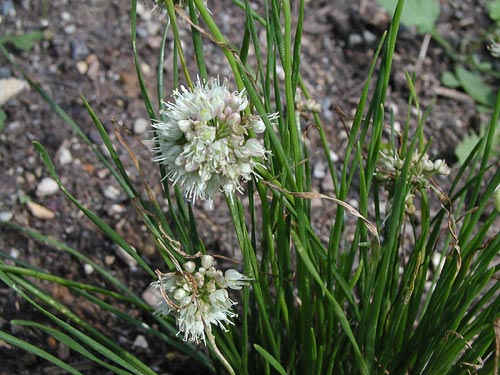Relatives
Allium stellerianum Willd. s. str. - Stellers.s onion.
Taxonomic position.
Family Alliaceae J.Agardh, genus Allium L.Morphology and biology.
Perennial. Geophyte. Bulbous. Bulbs conical, covered with violet scarious tunics, arranged 1-3 on ascending rhizome. Scape 25-40 cm tall, erect, cylindrical. Leaves 2-3 mm wide, channelled, 2-4, condensed at the scape base, may reach up to 2/3 of its height. Umbel more or less few-flowered, somewhat lax, spherical, less often semispherical. Pedicels 1.5-2 times as long as tepals. Tepals 5-6 mm long, yellow, those of inner circle truncate at the apex. Filaments 1.5 times as long as tepals, entire, broadened at the base (then subulate), inner ones 1.5 times as wide as outer ones. Style much exserted from perianth. Ovary elongately ellipsoidal. Autochore. Flowers in July, fruits in August. 2n=32.Distribution.
East Siberia (southwest, Buryatia, Cisbaikalia, Transbaikalia, Prilenskoye Plateau), North Mongolia.Ecology.
Xeropyte. Photophilous. On dry stony and debris mountain slopes, on rocks, in steppified pine forests.Use and economic value.
Wild relative of cultivated onions. Notable for the high content of ascorbic acid.References:
Brezhnev DD, Korovina ON. 1981. Wild relatives of cultivated plants of the flora of the USSR. Leningrad: Kolos. 375 p. (In Russian).Friesen NV. 1988. Onion plants of Siberia. Novosibirsk: Nauka. P.115-117. (In Russian).
Malyshev LI., Peshkova GA., ed. 1987. Flora of Siberia. V.4. Araceae - Orchidaceae. P.75. (In Russian).
Vvedensky AI. 1935. Onion . Allium L. In: Komarov VL., ed. Flora URSS. V.4. Moscow; Leningrad: AN SSSR. P.165-166. (In Russian).


